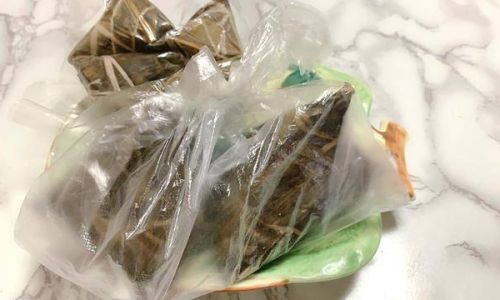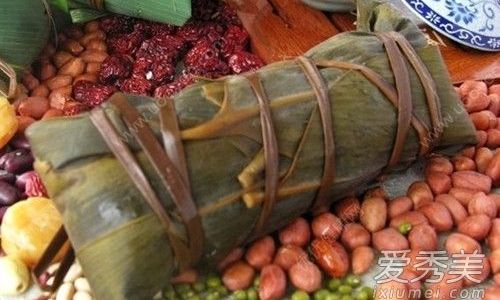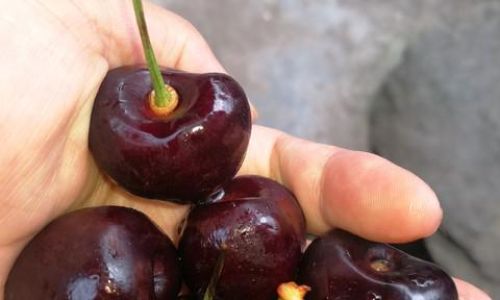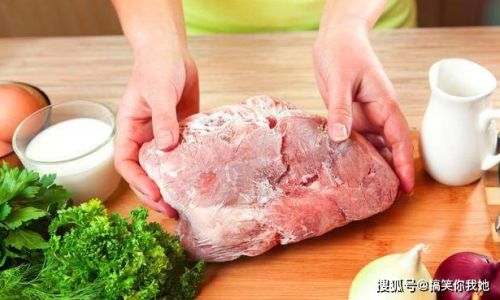Table of content
Zongzi, a traditional Chinese rice dumpling wrapped in bamboo or reed leaves, has become a beloved treat worldwide, particularly during the Dragon Boat Festival. These sticky rice parcels, often filled with ingredients like red bean paste, pork, or salted egg yolk, are labor-intensive to make from scratch. As a result, many home cooks and food enthusiasts opt for frozen zongzi, which offer convenience without compromising flavor. However, a common question arises: How long does it take to thaw frozen zongzi safely and effectively?

This article delves into the science of thawing frozen zongzi, exploring various methods, safety guidelines, and tips to ensure your dumplings retain their texture, aroma, and taste. Whether you’re a seasoned chef or a curious beginner, this guide will equip you with the knowledge to prepare frozen zongzi like a pro.
Understanding Frozen Zongzi: Composition and Freezing Basics
Before addressing thawing times, it’s essential to grasp why zongzi freeze well and how their ingredients influence the process. Zongzi are typically made with glutinous rice, which has a high starch content. When cooked, the starch gelatinizes, creating a sticky, cohesive texture. Freezing slows down starch retrogradation—a process where starch molecules realign into a crystalline structure, causing food to harden. However, improper thawing can accelerate retrogradation, leading to a dry, crumbly texture.
Modern frozen zongzi are often vacuum-sealed or packaged in airtight containers to prevent freezer burn, which occurs when moisture evaporates from the food’s surface, leaving it dehydrated and tough. The quality of the packaging, along with the freezer’s temperature (ideally 0°F or -18°C), plays a pivotal role in preserving the dumplings’ integrity.
Why Thawing Time Matters: Safety and Texture
Thawing frozen zongzi is not merely a matter of convenience—it’s a critical step for food safety and culinary success. Rapid thawing at room temperature can create a “danger zone” (40°F–140°F or 4°C–60°C) where bacteria multiply exponentially, increasing the risk of foodborne illness. Conversely, overly slow thawing may cause the rice to absorb excess moisture, resulting in a soggy, mushy exterior.
The goal is to thaw zongzi gently, allowing heat to distribute evenly while minimizing microbial growth. The method you choose will determine the thawing time and the final texture of the dumpling.
Thawing Methods: Pros, Cons, and Recommended Times
Refrigerator Thawing (Safest, Slowest Method)
The refrigerator is the gold standard for thawing frozen foods, including zongzi. This method maintains a consistent, cold temperature (below 40°F or 4°C), significantly reducing bacterial risk.
-
Steps:
- Remove the frozen zongzi from its packaging.
- Place it on a plate or in a container to catch condensation.
- Leave it in the refrigerator for 8–12 hours, or overnight.
-
Thawing Time:
- Small zongzi (100–150 grams): 8–10 hours.
- Large zongzi (200–250 grams): 10–12 hours.
-
Pros:
- Safest method; minimizes bacterial growth.
- Preserves texture and flavor.
-
Cons:
- Requires advance planning.
- Not ideal for last-minute meals.
Cold Water Thawing (Faster, Requires Attention)
If you’re short on time, submerging frozen zongzi in cold water accelerates thawing. The key is to use cold tap water (not warm or hot) to prevent bacterial proliferation.
-
Steps:
- Keep the zongzi in its original packaging or a leak-proof plastic bag.
- Submerge it in a bowl of cold water.
- Change the water every 30 minutes to maintain a safe temperature.
-
Thawing Time:
- Small zongzi: 2–3 hours.
- Large zongzi: 3–4 hours.
-
Pros:
- Faster than refrigerator thawing.
- Suitable for same-day preparation.
-
Cons:
- Requires frequent monitoring.
- Risk of partial cooking if water temperature rises.
Microwave Thawing (Fastest, Riskiest)
Microwaves offer the quickest thawing option but demand caution to avoid uneven heating or partial cooking.
-
Steps:

- Remove the zongzi from its packaging.
- Place it on a microwave-safe plate.
- Use the “defrost” setting or 30% power.
- Microwave in 1-minute intervals, flipping the dumpling each time.
-
Thawing Time:
- Small zongzi: 3–5 minutes.
- Large zongzi: 5–7 minutes.
-
Pros:
- Extremely fast.
- Ideal for urgent meals.
-
Cons:
- High risk of overheating or drying out the rice.
- Uneven thawing may create hotspots.
Steam Thawing (Dual-Purpose Method)
Steaming kills two birds with one stone: it thaws and cooks the zongzi simultaneously. This method is perfect for those who prefer their dumplings piping hot.
-
Steps:
- Fill a steamer with water and bring it to a boil.
- Place the frozen zongzi in the steamer basket.
- Steam for 20–30 minutes (depending on size).
-
Thawing Time:
- Small zongzi: 20–25 minutes.
- Large zongzi: 25–30 minutes.
-
Pros:
- Thaws and cooks in one step.
- Retains moisture and flavor.
-
Cons:
- Requires a steamer.
- Longer cooking time than other methods.
Factors Affecting Thawing Time
- Size and Thickness: Larger zongzi with thicker layers of rice and fillings take longer to thaw.
- Packaging: Vacuum-sealed zongzi thaw slower than those in breathable bags.
- Freezer Temperature: Zongzi stored at -10°F (-23°C) thaw faster than those at 0°F (-18°C).
- Initial Temperature: Zongzi thawed directly from the freezer vs. a chilled freezer compartment may vary slightly.
Safety Tips: Avoiding Foodborne Illness
- Never Thaw at Room Temperature: Bacteria like Staphylococcus aureus and Bacillus cereus thrive in the danger zone.
- Cook Immediately After Thawing: Refrigerator-thawed zongzi should be cooked within 2 hours.
- Avoid Refreezing: Thawed zongzi should not be refrozen, as this degrades texture and quality.
- Check for Spoilage: Discard zongzi with off-odors, slimy textures, or mold.
Enhancing Flavor and Texture Post-Thawing
Even with proper thawing, frozen zongzi may lack the freshness of homemade ones. Here’s how to revive their taste:
- Brush with Oil: Lightly coating the leaves with sesame or vegetable oil before steaming adds aroma.
- Add Aromatics: Place a slice of ginger or a pandan leaf in the steaming water for fragrance.
- Serve with Sauces: Pair with soy sauce, chili oil, or sweet bean paste to elevate flavor.
- Reheat Gently: Avoid overcooking, which can make the rice gummy.
Common Mistakes to Avoid
- Using Hot Water for Thawing: Accelerates bacterial growth and partially cooks the rice.
- Overcrowding the Microwave: Uneven thawing leads to dry patches.
- Skipping the Steamer Basket: Placing zongzi directly in water makes them soggy.
- Ignoring Expiry Dates: Frozen zongzi last 6–12 months; beyond that, quality declines.
FAQs About Thawing Frozen Zongzi
Q1: Can I thaw zongzi in the oven?
A: No. Ovens lack the moisture needed for gentle thawing and may dry out the rice.
Q2: Is it safe to eat zongzi that’s still partially frozen?
A: No. Partial thawing creates uneven textures and bacterial risks.
Q3: Can I thaw zongzi in its packaging?
A: Only if the packaging is microwave-safe or submersible in water. Otherwise, remove it.
Q4: How do I know when zongzi is fully thawed?
A: Gently press the center; it should feel soft, not icy.
Q5: Can I thaw zongzi in a slow cooker?
A: Not recommended. Slow cookers heat too gradually, risking bacterial growth.
Conclusion: Mastering the Art of Thawing Zongzi
Thawing frozen zongzi is a delicate balance of time, temperature, and technique. While the refrigerator method offers the safest results, cold water or steaming provides viable alternatives for those in a hurry. Regardless of the method you choose, prioritizing food safety and texture preservation will ensure your zongzi taste as close to freshly made as possible.
Next time you crave these sticky, aromatic delights, remember that patience is a virtue—even in the kitchen. With the right approach, frozen zongzi can transform into a culinary masterpiece, bridging tradition and convenience with every bite.





0 comments